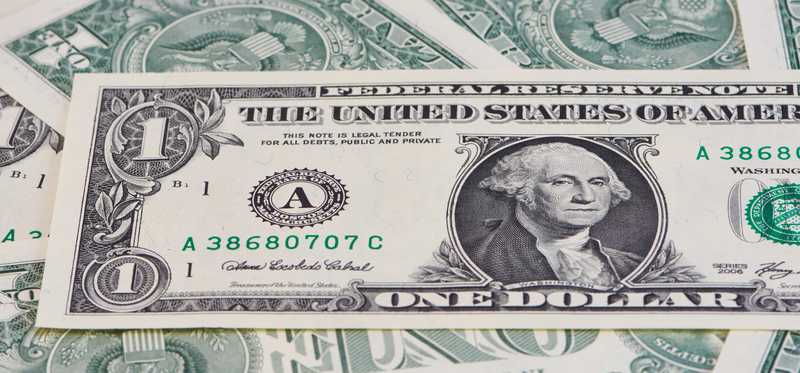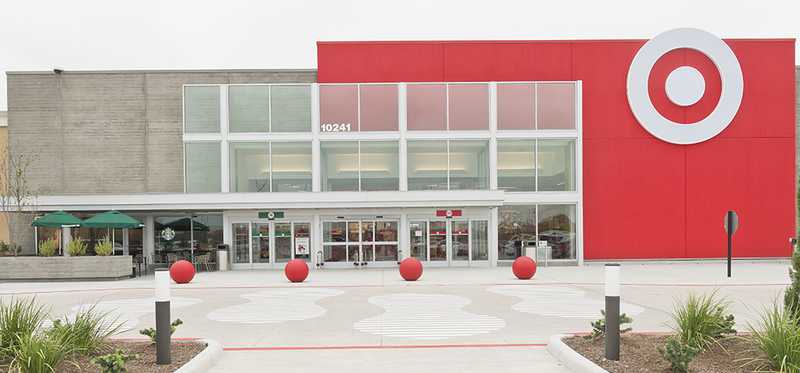These 9 Retailers Are Actually Opening Stores

These 9 Retailers Are Actually Opening Stores
Watch these brick-and-mortar retailers
Many brick-and-mortar retailers struggled with waning foot traffic, competition from e-tailers, and lower consumer price expectations over the past few years. A common defensive strategy is to close stores and invest more heavily in e-commerce initiatives. However, nine resilient retailers are actually opening stores in this tough market.
ALSO READ: 10 Chains That Opened at Least 300 New Stores Last Year
Previous
Next

Dollar General: 1,315 new stores in 2017
Dollar General (NYSE:DG) opened 1,315 new stores in 2017 and finished the year with 14,534 stores. It plans to open another 900 stores this year while remodeling 1,000 of its current locations.
Dollar General focuses more on rural markets than its dollar store rivals. Most if its products cost less than $5. Its comps rose 3.3% during the holiday quarter, led by robust demand for consumable goods. It expects its comps to grow in “the mid-2% range” this year.
Dollar General’s gross margins, on a trailing 12 month basis, have stayed above 30% over the past several years. Analysts expect its revenue to rise 9% as its earnings climb 33% this year -- so the stock’s 320% rally over the past decade might not be over yet. It also pays a forward dividend yield of 1.2%.
Previous
Next

Dollar Tree: 260 new stores in 2017
Dollar Tree’s (NASDAQ:DLTR) namesake chain finished last year with 6,660 stores -- a net increase of 260 locations from 2016. It plans to open 350 more locations this year.
Dollar Tree's comparable store sales rose 3.8% last quarter, marking the chain's 40th straight quarter of comps growth. Dollar Tree sells all of its products for a dollar or less, and its stores are generally located closer to lower-income neighborhoods than superstores like Walmart (NYSE:WMT).
Dollar Tree expects its total comps, which include the Family Dollar stores it acquired in 2015, to rise by the “low single digits” in 2018. Wall Street expects its revenue and earnings to rise 4% and 16%, respectively, this year. Its stock rallied nearly 900% over the past ten years -- but it doesn’t pay a dividend.
Previous
Next

Family Dollar: 211 new stores in 2017
Dollar Tree’s Family Dollar opened 211 stores in 2017, finishing the year with 8,185 locations. Dollar Tree plans to open 300 new Family Dollar stores in 2018, and re-banner 50 locations to the Dollar Tree brand.
Family Dollar’s growth has generally been weaker than Dollar Tree's. Its comps rose just 1% last quarter, but marked the chain's third straight quarter of comps growth. Family Dollar targets a slightly pricier market than Dollar Tree, by selling products that cost up to $10. The bears argue that Family Dollar is more vulnerable to Walmart and Amazon (NASDAQ:AMZN), which recently launched an “under $10 with free shipping” category.
The bears also claim that Family Dollar is a dead weight on Dollar Tree’s comps and margins. The bulls, however, believe that Dollar Tree can gradually turn around the brand to widen its competitive moat.
Previous
Next

TJX Companies: 258 new stores last year
TJX Companies (NYSE:TJX) -- which owns TJ Maxx, Marshalls, and HomeGoods -- opened 258 new stores worldwide last year, bringing its total store count to 4,070. TJX’s off-price retailers benefited from full-price retailers being “Amazoned,” since it buys and resells those companies’ excess inventories at dirt cheap prices.
That clever business model enables TJX to sell products at lower prices than Amazon. It also makes it stores popular spots for “treasure hunters” looking for off-season brand names at bargain bin prices. Its rapid, constant rotation of those products keeps shoppers returning to its brick-and-mortar stores.
TJX’s comps rose 2% last year, led by TJX Canada and HomeGoods. It expects 1% to 2% comps growth this year, and plans to open 238 new stores. Analysts expect TJX’s revenue and earnings to rise 5% and 22%, respectively, this year. The company pays a forward dividend yield of 1.8%, and it’s hiked that payout every year for over two decades.
ALSO READ: TJX Companies' Not So Secret Weapon
Previous
Next

Five Below: 103 new stores in 2017
Five Below’s (NASDAQ:FIVE) store count rose by 103 to 625 locations in 2017. It plans to open 125 new locations this year, and has a long-term goal of opening 2,500 stores across the U.S. Five Below applies the dollar store model to “fun” products like mobile accessories, room decorations, clothing, candy, and gifts. All its products cost less than $5, and it mainly targets teens and young adults.
The bears once claimed that Five Below relied too heavily on new store openings to drive its sales growth. But they were silenced by its 5.9% comps growth last quarter -- which marked an acceleration from 1% comps growth a year earlier. The company believes that it can maintain 20% growth in both sales and earnings growth throughout 2020.
Analysts expect Five Below’s revenue to rise 18% this year, and for its earnings to grow 35%. The stock already doubled over the past three years, but it could still have room to run.
Previous
Next

Ulta Beauty: 100 new stores in 2017
Beauty products chain Ulta Beauty (NASDAQ:ULTA) opened 100 stores in 2017, bringing its total store count to 1,074. It plans to open 100 new locations this year. Ulta carved out a high-growth retail niche with its cosmetic products, and its in-store salons keep customers coming back.
Ulta’s comps rose 11% last year, but that marked a slowdown from its 15.8% growth in 2016. Some investors are concerned about competition from LVMH’s Sephora, which is expanding its presence within JCPenney’s (NYSE:JCP) stores. Other investors are worried that Amazon’s partnerships with high-end beauty brands like Violet Grey could also hurt Ulta’s growth.
Wall Street still expects Ulta’s revenue to rise 13% this year as its earnings grow 30%. Those are impressive growth figures, but ongoing concerns about Ulta’s long-term future caused its stock to slide more than 15% over the past 12 months.
Previous
Next

Target: 20 new stores in 2017
Target’s (NYSE:TGT) store count grew by 20 to 1,822 last year. The company hasn't disclosed exactly how many stores it will open or close in 2018, but it plans to open 30 small format stores for urban markets to boost its small format count to 130. It also plans to remodel 1,000 locations over the next three years.
The bears often claim that Amazon's takeover of Whole Foods could hurt Target’s food business, which generated a fifth of its revenues last year. They also argue that Amazon could install more lockers at its Whole Foods stores to blur the lines between its online marketplace and brick-and-mortar stores.
Despite those challenges, Target's comps rose 3.6% last quarter, led by a 29% jump in its digital comps. Analysts expect its revenue to rise 1% as its earnings, lifted by better cost controls and buybacks, rise 12%. Target also pays a forward dividend yield of 3.4%, and it’s raised that dividend annually for five straight decades.
Previous
Next

Walmart: 89 new stores last year
Walmart’s U.S. store count rose by 89 to 4,761 last year. It opened 39 Supercenters, 65 Neighborhood Markets and small format stores, and closed 15 discount stores. Its overseas store count declined by three locations to 6,360. Walmart plans to open fewer stores this year, but hasn't disclosed an exact target yet.
Walmart's U.S. comps rose 2.1% last year, representing its strongest growth since 2009. Its e-commerce revenues rose 44% as it ramped up its digital and delivery efforts to counter Amazon. Wall Street expects Walmart’s revenue to rise 2% this year and for its earnings to grow 12%. The company pays a forward dividend yield of 2.4%, and it’s raised that payout annually for over four decades.
Walmart’s stock rallied 16% over the past 12 months, but a disappointing fourth quarter report -- which featured its first earnings miss in ten quarters -- sparked concerns about its decelerating e-commerce growth and rising operating expenses.
ALSO READ: Why 2018 Could Be Walmart's Best Year Yet
Previous
Next

Costco: Up to 28 new warehouses this year
Costco (Nasdaq: COST) opened eight new locations worldwide during the first half of fiscal 2018, with seven new stores in the U.S and one new location in Canada, boosting its warehouse count to 749. It plans to open 18 to 20 new warehouses in the second half of the year.
Costco's total comps, excluding gas and currency impacts, rose 5.4% last quarter. Higher gas prices and a soft dollar lifted its reported comps growth to 8.4% -- with 7.1% U.S. growth and 15.7% international growth. Costco's total membership revenues also rose 13% annually, with higher fees offsetting slower growth in new members, as its e-commerce revenues climbed 28.5%.
Analysts expect Costco’s revenue and earnings to grow 8% and 21%, respectively, this year. The company pays a forward dividend yield of just 1% -- but it’s raised that payout annually for 14 straight years. Costco’s stock already rallied more than 80% over the past five years, but the warehouse king remains a tough retailer to topple.
John Mackey, CEO of Whole Foods Market, an Amazon subsidiary, is a member of The Motley Fool’s board of directors. Leo Sun owns shares of Amazon. The Motley Fool owns shares of and recommends Amazon. The Motley Fool recommends Costco Wholesale, Five Below, The TJX Companies, and Ulta Beauty. The Motley Fool has a disclosure policy.
Previous
Next
Invest Smarter with The Motley Fool
Join Over Half a Million Premium Members Receiving…
- New Stock Picks Each Month
- Detailed Analysis of Companies
- Model Portfolios
- Live Streaming During Market Hours
- And Much More
READ MORE
HOW THE MOTLEY FOOL CAN HELP YOU
-
Premium Investing Guidance
Market beating stocks from our award-winning service
-
The Daily Upside Newsletter
Investment news and high-quality insights delivered straight to your inbox
-
Get Started Investing
You can do it. Successful investing in just a few steps
-
Win at Retirement
Secrets and strategies for the post-work life you want.
-
Find a Broker
Find the right brokerage account for you.
-
Listen to our Podcasts
Hear our experts take on stocks, the market, and how to invest.
Premium Investing Services
Invest better with The Motley Fool. Get stock recommendations, portfolio guidance, and more from The Motley Fool's premium services.